The S.P.A.C.E. (Students Performing Academically Constructive Exercises)
By Jonathan M. Schaefer
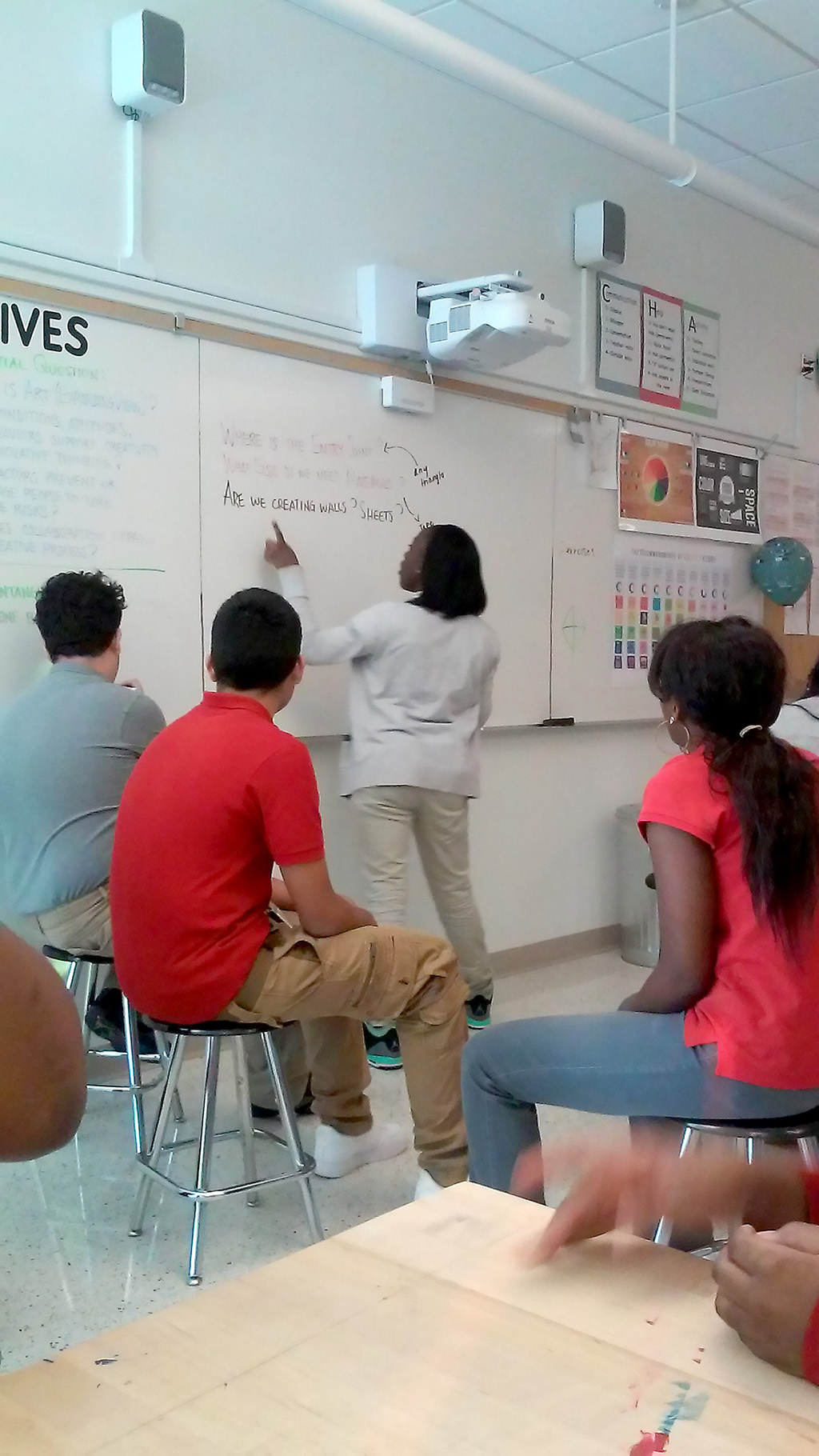
Students generated their own ideas about what concepts to explore through collaborative projects. They designed and built their own physical space to hold formative discussions about issues that impact the school community. Students developed their own artistic artifacts to help aide in those discussions, installed those artifacts in their collaborative space, and encouraged the school community to use this space as an alternative classroom.

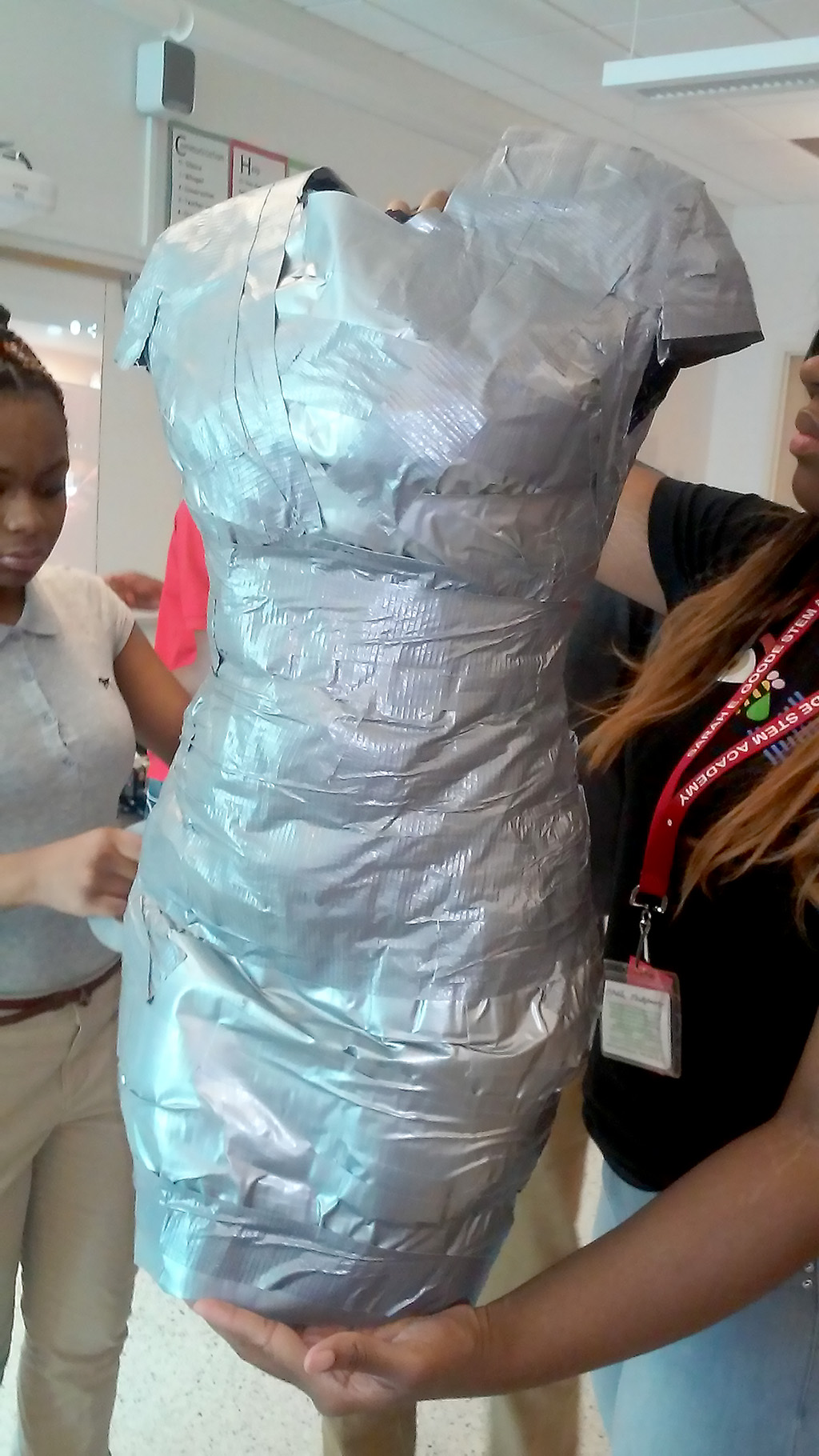
Guiding Questions
- Was this school built for “you” specifically, or based on an idea of who you are or should be?
- What is worth discussing in school?
- What are you interested in learning about?
Goals
This lesson addresses the following Common Core standards: CCSS.ELA-LITERACY.SL.11-12.1, CCSS.ELA-LITERACY.SL.11-12.1.A, CCSS.ELA-LITERACY.SL.11-12.1.B, CCSS.ELA-LITERACY.SL.11-12.1.C, CCSS.ELA-LITERACY.SL.11-12.1.D.
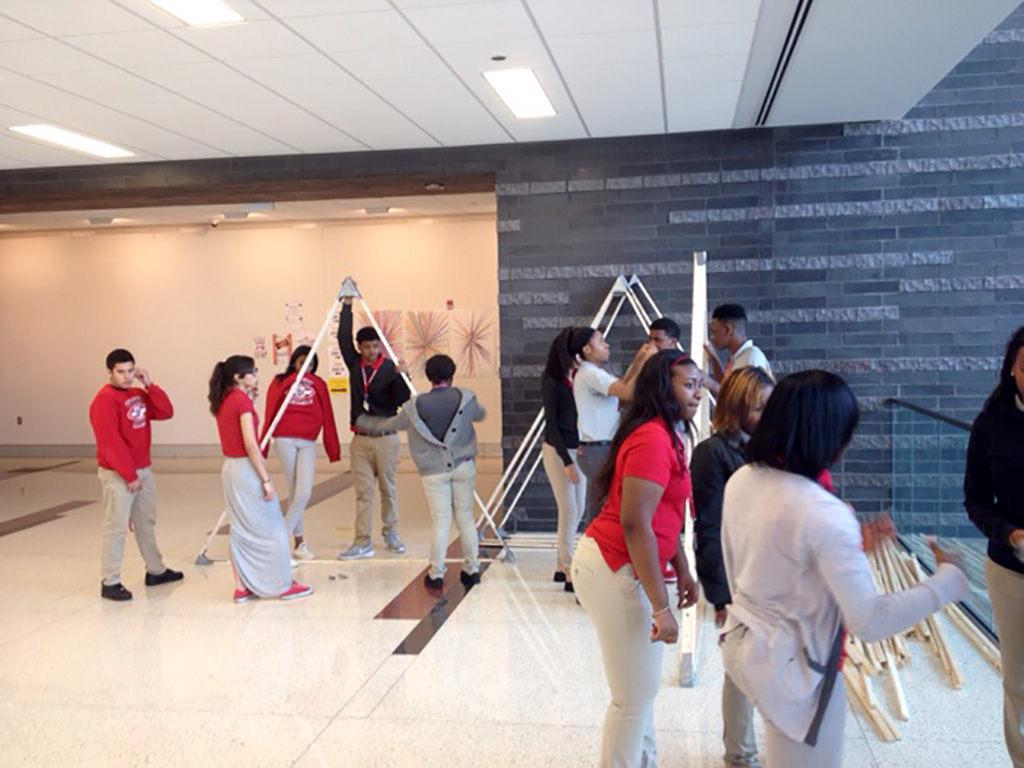
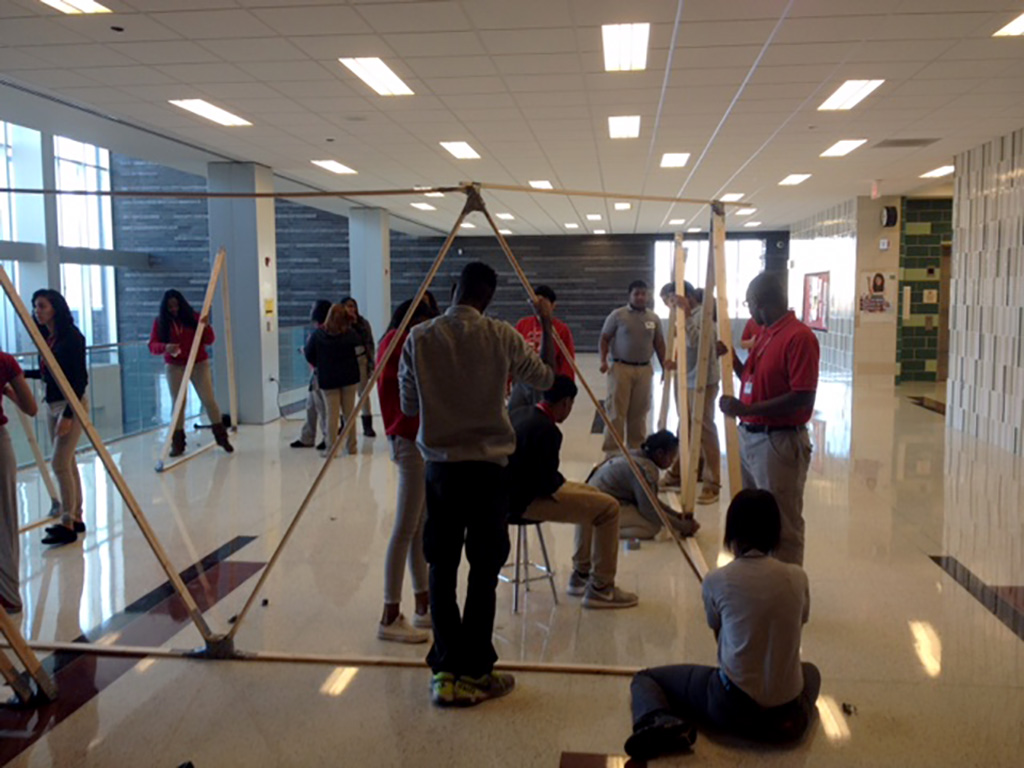
Documentation + Assessment
- Students documented their process by photographing their work at all stages of the project. They wrote a daily bell-ringer prompt to reflect on their artistic process throughout the project. Students created a website to upload photographs and other artifacts for their project to share with the community.
- Students assessed their learning process by creating their own rubrics that aligned to the National Core Art Standards. They created a schedule to monitor their progress for each week they worked on the project. Students received an initial feedback grade using a project-based rubric and then were allowed to improve their projects for a final grade. They also gave their group members a participation grade.
View documentation on the S.P.A.C.E. homepage.
Timeframe + Learning Activities
Timeframe:
- 84-minute classes, 5 days a week.
- 4 to 8 weeks (depending on how many artifacts are made).
Learning Activities
Introduction: 3 Days
- Visit the MCA Chicago to see the exhibition The Freedom Principle: Experiments in Art and Music, 1965 to Now.
- Students share and discuss their favorite pieces via a PowerPoint presentation.
- Students view a PowerPoint on trying to define contemporary art.
- Students read the article “How the Art of Social Practice is Changing the World One Row House at a Time,” by Carolina Miranda. Students examine the content of the article using the Fish-Bowl Protocol, in which students discuss the article in an inner circle while their interactions are documented by a surrounding outer circle of students.
- Students view a Ted Talk video on Social Practice (Public Art as Social Engagement, Ed Woodham).
- Students participate in a class discussion focusing on the question:
- Was our school created specifically for you or some idea of who or what you are to be or become?
- Discussion Prompt: If we are going to have discussions on social issues, why don’t we create our own space to have these discussions?
Stage 1: 3 Days
- Students are given materials to create their own “space” with the expectation that it will be used as an alternate “classroom” for their class and other students in the building.
- Building off of prior experience with creating temporary spaces, students determine that triangular structures will work best to build their space.
- Teams are created and roles are assigned for the creation of the space, with student leaders directing the teams.
- Students build the space. Upon completion, students decided to name it S.P.A.C.E (Students Performing Academically Constructive Exercises).
Stage 2: 1.5–2 Weeks
- Discussion Prompt: The space is built, now we need to figure out what kind of discussions we want to have.
- Students create a list of social topics they find relevant and choose stereotypes as a topic to focus on for the discussions in their space.
- Discussion Prompt: Now that a topic has been chosen what kind of art can we make that helps facilitate conversations in our community?
- Students research materials and artistic references and decide to create life-size stereotyped papier-mâché figures that depict how they see themselves, how others see them and the reality of who they are.
- Students separate into groups to make each of these three distinct figures and develop a timeline for completion of the project.
- Students create rubrics for grading.
- Students view a video about creating body casts using duct tape and papier-mâché.
- Students create body parts and paint them when they are dry. The three figures are completed.
Stage 3: 2 weeks
- Students participate in a class discussion about the pieces they created and about the ways that stereotypes affect their daily lives inside the S.P.A.C.E.
- Discussion Prompt: Where do we go from here? How can we build off of these ideas?
- Students brainstorm and decide to create stereotypical housing that explores how homes and environments help create and reinforce the stereotypes we have about people.
- Students research materials needed for construction of housing pieces.
- Students re-assign groups and develop timelines for completion of projects.
- Students build model house structures that further explore ideas about stereotypes using plywood, paint, and found objects.
Installation: 1 day
- The houses and papier-mâché pieces are put into the S.P.A.C.E. and students participate in a discussion about how these houses function as part of the S.P.A.C.E.
- Students install a projector, speakers and projection screen, making S.P.A.C.E. a fully usable classroom space.
- Students brainstorm and write a written explanation of the project as a whole.
Community Use: Multiple Days
- Students use the S.P.A.C.E. as a collaborative classroom.
- The S.P.A.C.E. is opened up to other classes and students for use.
- Teachers can’t wait to use the S.P.A.C.E for their classrooms. Students, administration, and teachers are curious about the space and have discussions with the students who created the space about what is included and why.
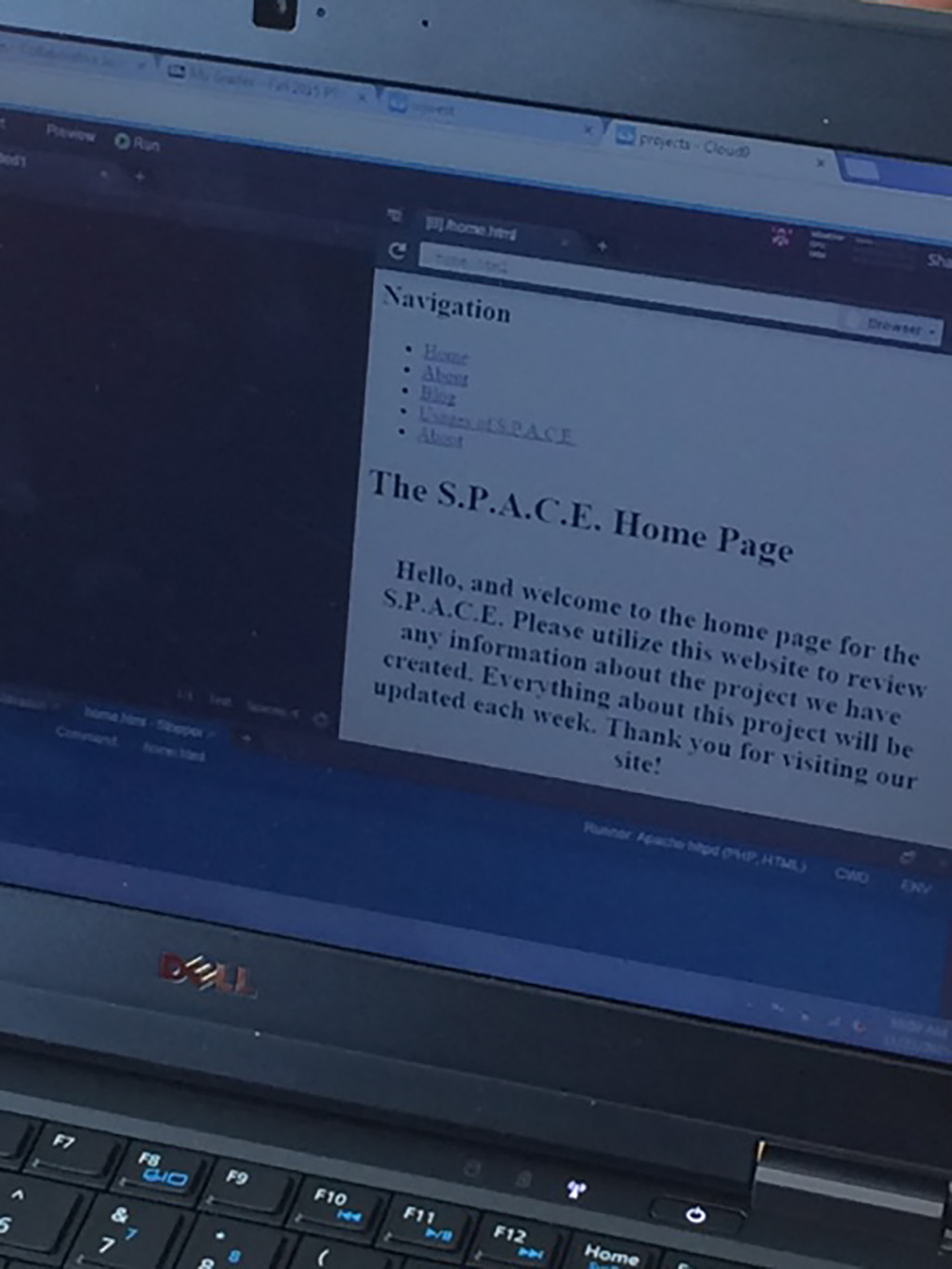
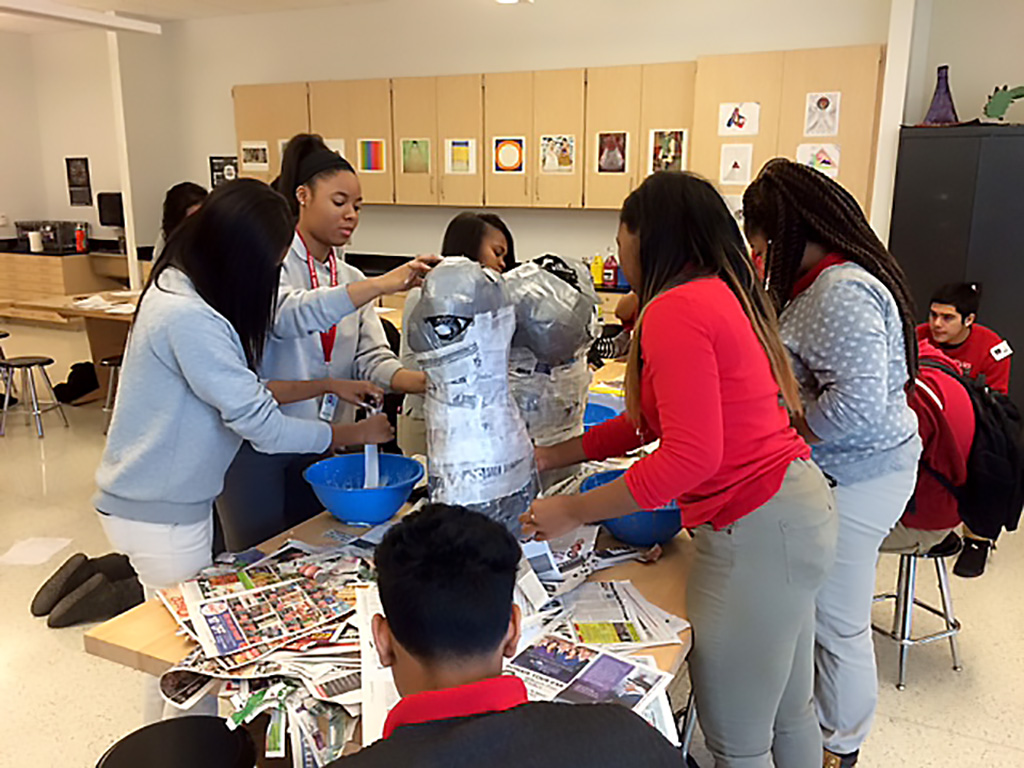
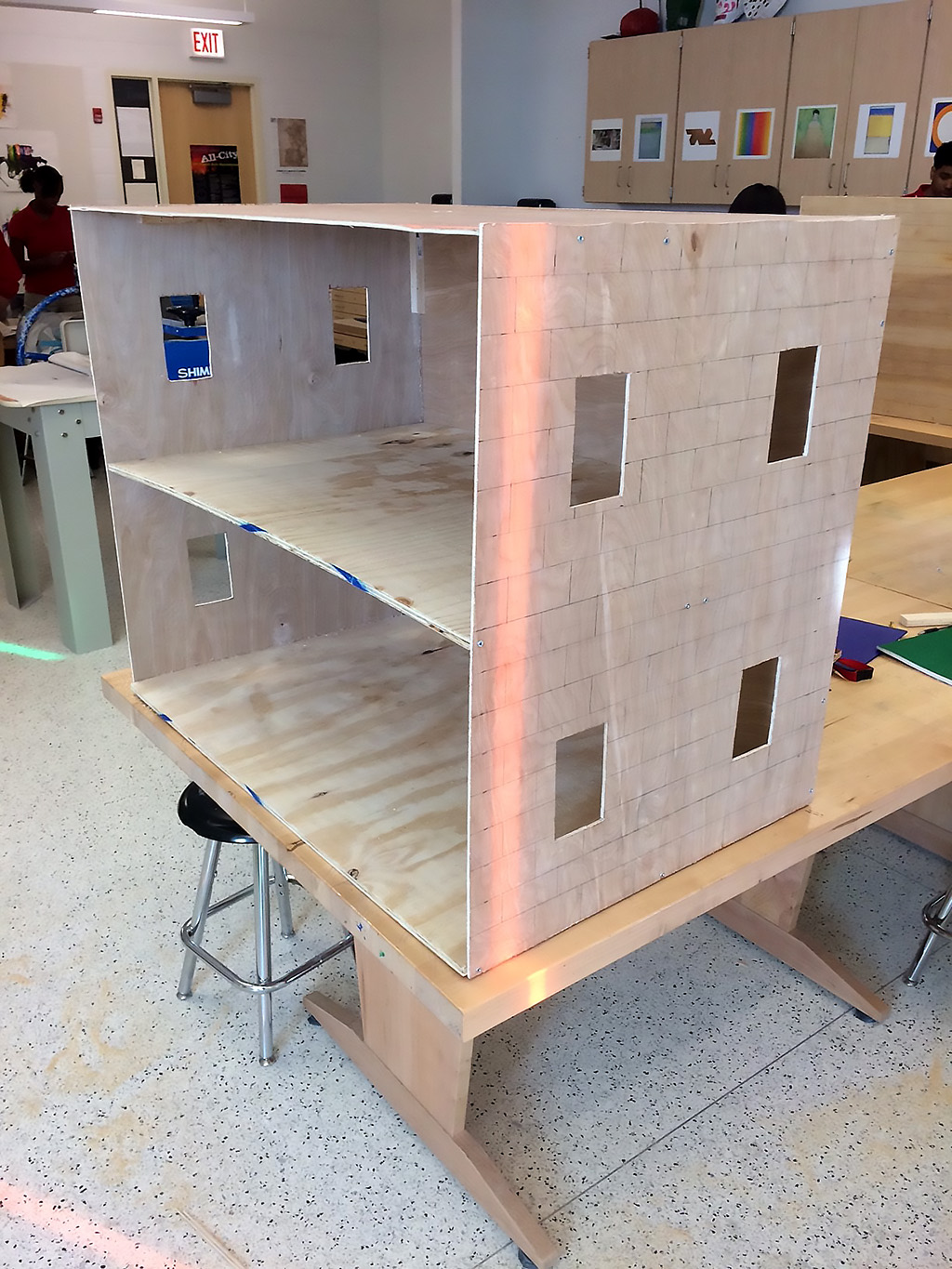
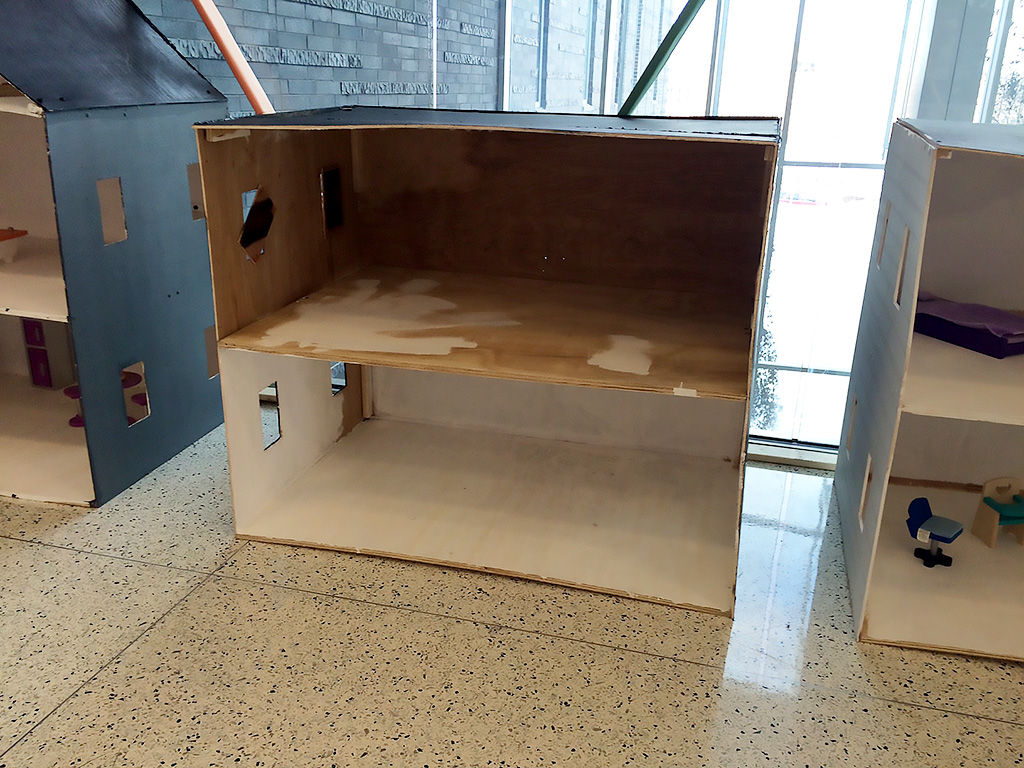
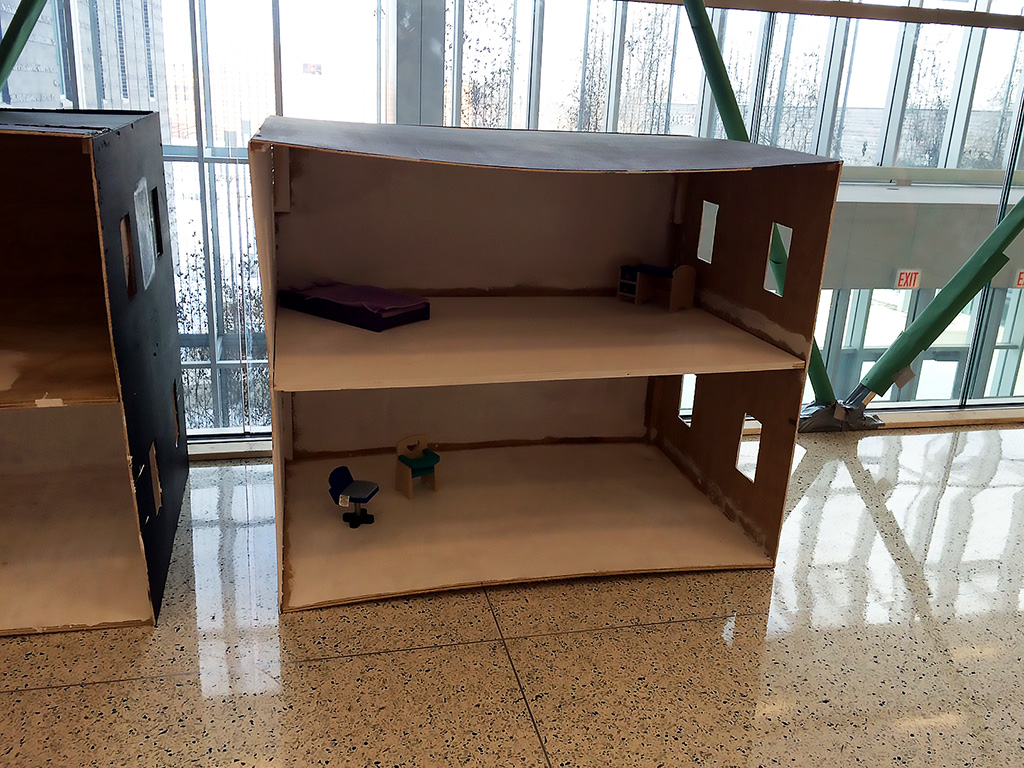
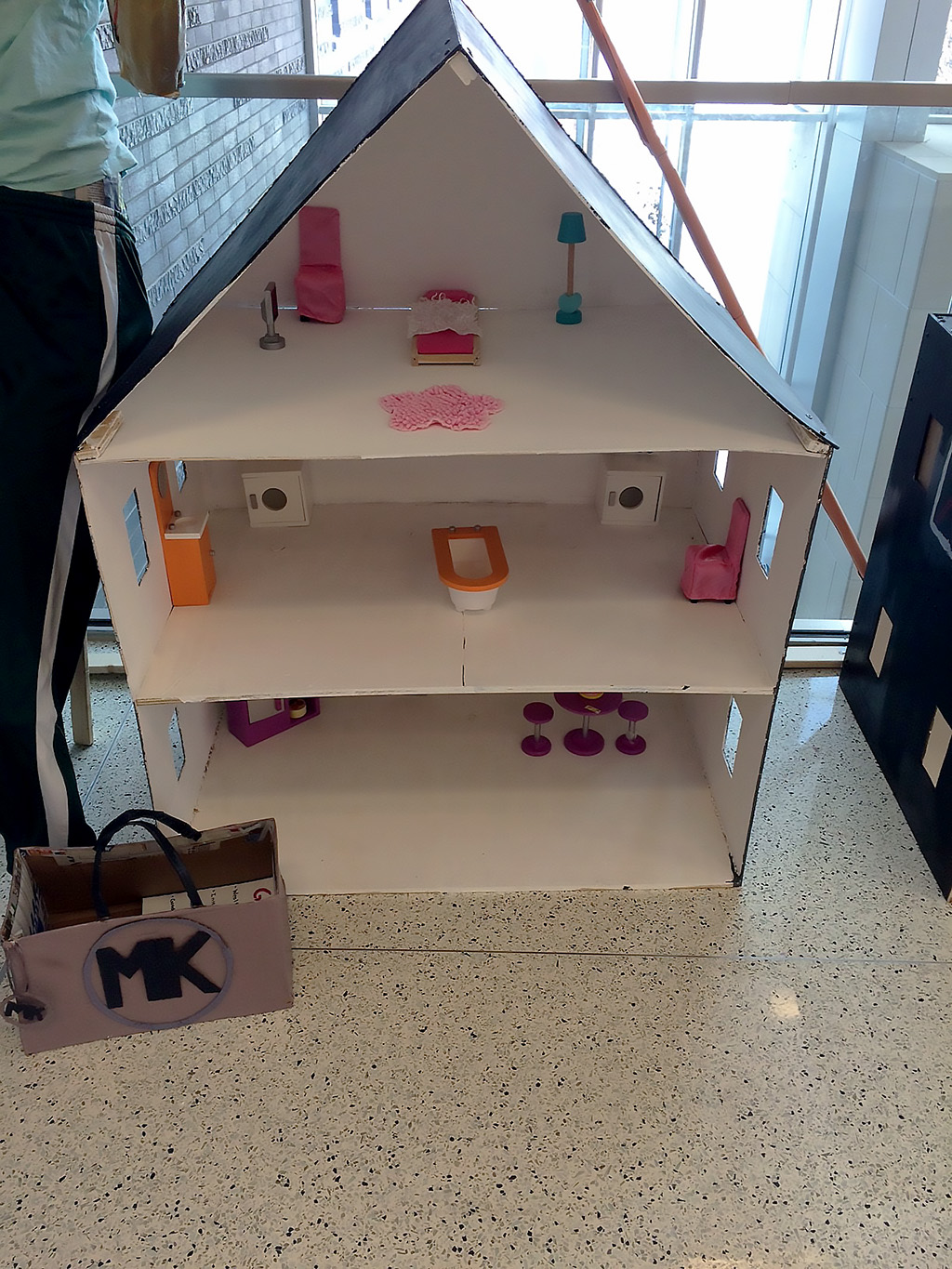
Materials
The S.P.A.C.E.
- Pine, 80 pieces measuring 96” x 1” x 2” each
- Construction paper
- Duct tape
- Pull-down projector screen
- Projector & speakers
Papier-mâché People
- Duct tape
- Elmer’s glue
- Newspaper
- Acrylic paint
- Balloons
- Large trash bags
Houses
- Wood
- Wood screws
- Drill & drill bits
- Jigsaw
- Measuring tape
- Pencils
- Paint
- Doll furniture
- Hot glue gun and glue
MCA Connections
Students visited the MCA Chicago to experience the exhibition The Freedom Principle: Experiments in Art and Music, 1965 to Now
Student chose the following works from the MCA as inspiration, using these works as starting points for creating artworks designed to spark conversation in the S.P.A.C.E:
- Douglas R. Weart, George Lewis, Douglas Repetto — Rio Negro II
- Alexandre de Cunha — MCA Chicago Plaza Project
- Catherine Sullivan — Afterword via Fantasia
- Glenn Ligon — Give Us a Poem
- Lisa Alvarado — Represencing
- Nari Ward — We The People
- Nick Cave — Speak Louder
- Rafael Ferrer — Kayak #2: Norte
- Sanford Biggers — Ghetto Bird Tunic
- Terry Adkins — Native Son (Circus)
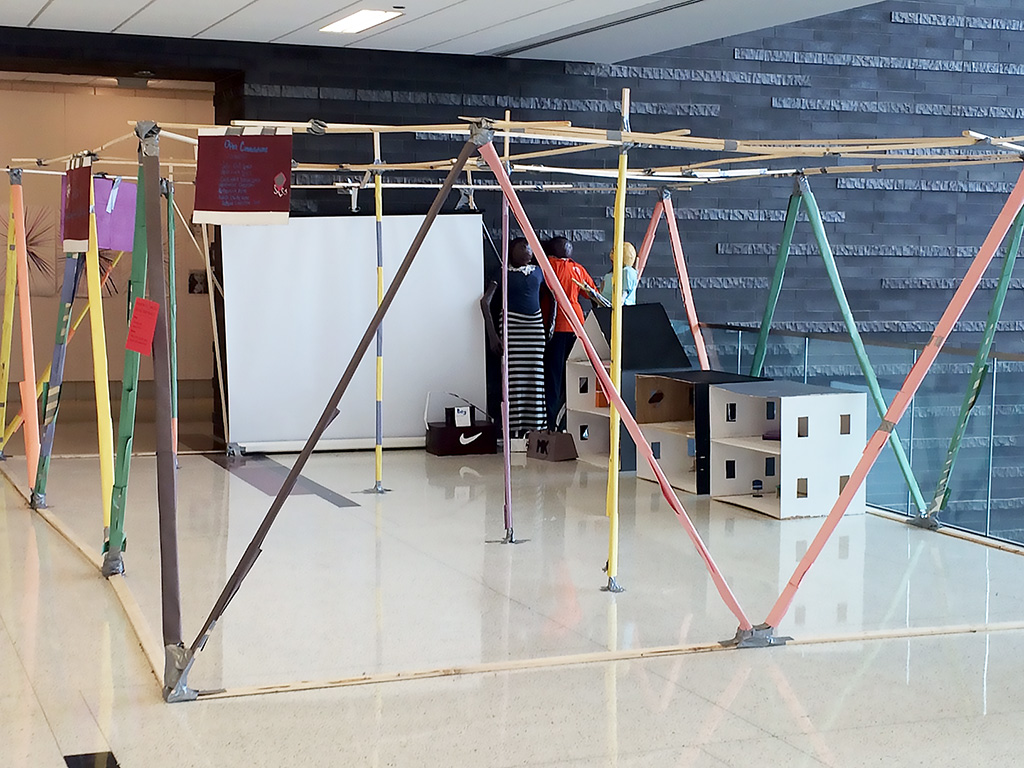
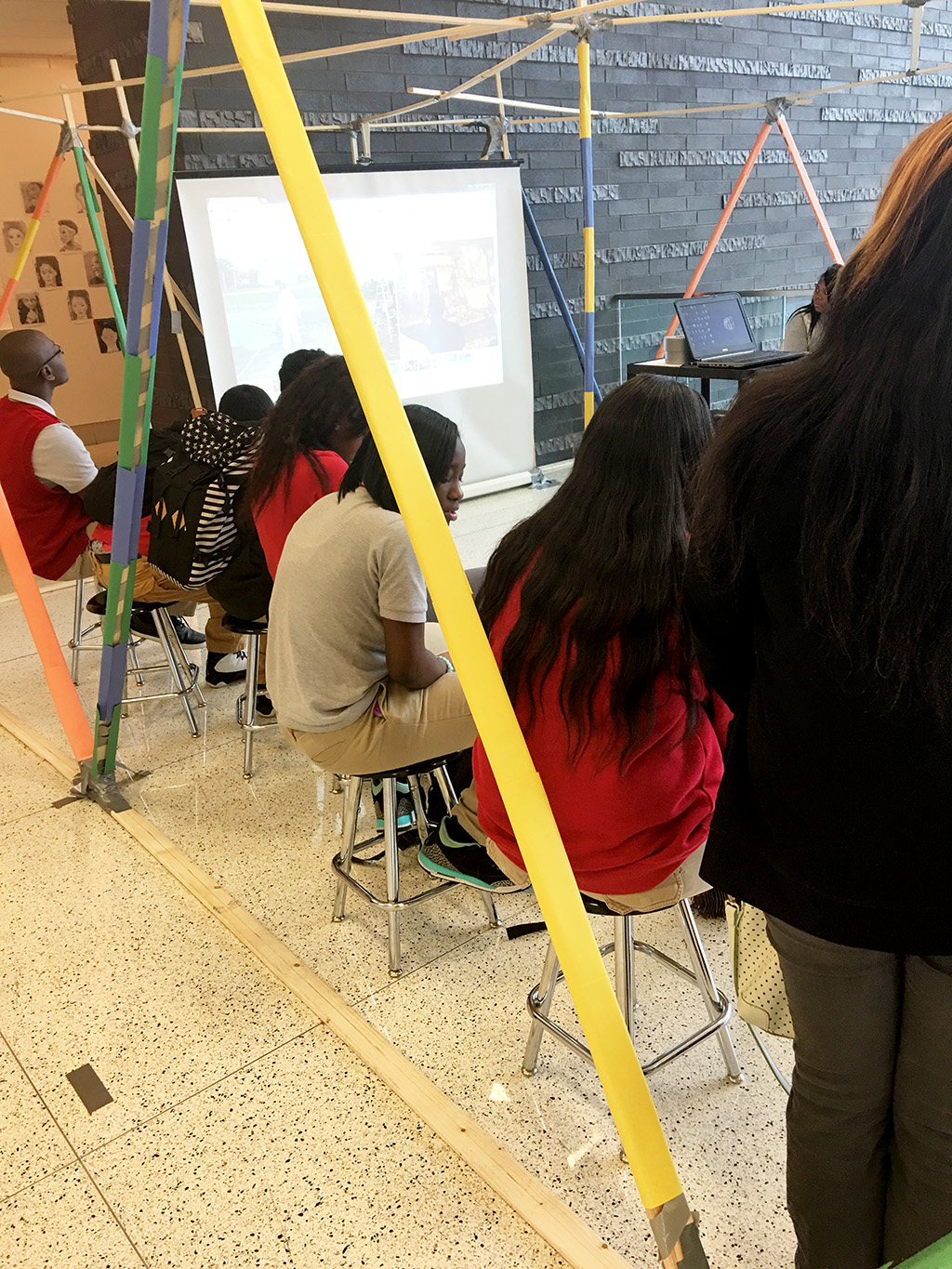
References + Resources
Artists
Other References
- What is Contemporary Art?— PowerPoint, courtesy of Susan Musich, Museum of Contemporary Art, Chicago
- Collaboration Rubric
- How the Art of Social Practice is Changing the World
- The History of the Hoodie
Jonathan M. Schaefer
Sarah E. Goode S.T.E.M. Academy
Jonathan reflects on his process:
The space and artifacts were built and displayed publicly for all of the community to interact with and use. The aim of this project was to create a safe place for difficult conversations that was built by students for students. Because the structure was created outside of the classroom, the project engaged the school community by inviting students and staff to participate in the project. They started asking questions and interacting with the space as it was being constructed. It created a buzz around the school. Teachers and administrators said “this is awesome! I can’t wait to use this.” The conversations about the design and function of the space continued after its completion as students, teachers, and staff began to fully use the space.
Students had to brainstorm and find meaning in the work they did. They came up with how and why they were making the artwork. I did my best to serve as a facilitator with the goal of exposing the students to socially engaged art-making rather than assigning them a particular project. As students discussed the process, viewed videos, and read about social practice, they started to form their own ideas about what was important and this drove the direction of the project. Seeing students develop their own ideas and getting excited about making art was a very powerful part of this project. The biggest obstacle was getting my students to persevere and stay on task. Building their art-making stamina was difficult. Celebrating little victories helped them get through the difficult times. When groups were breaking down in functionality they stopped and re-assessed their progress. Sharing their frustrations was a cathartic experience and allowed them to re-focus.